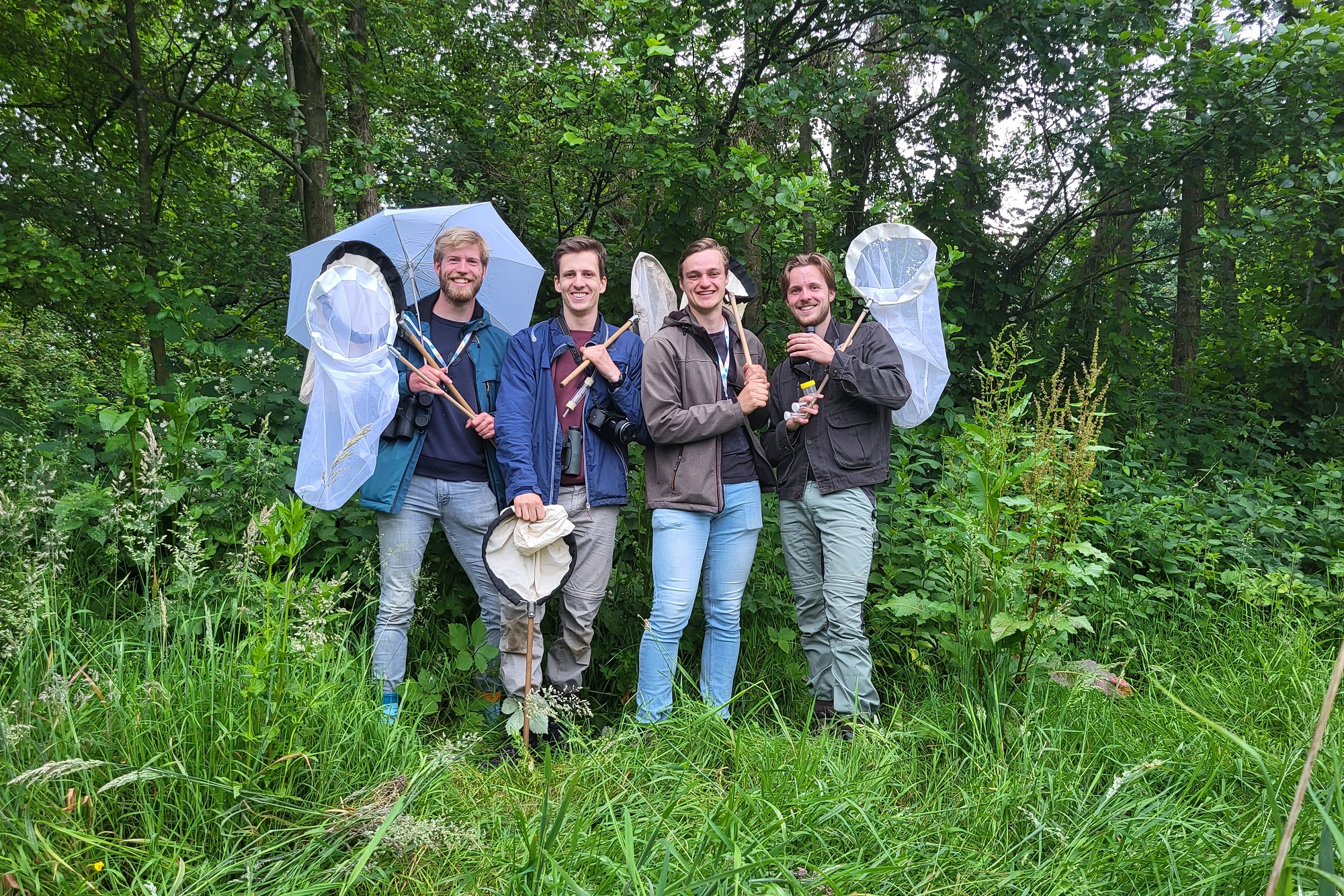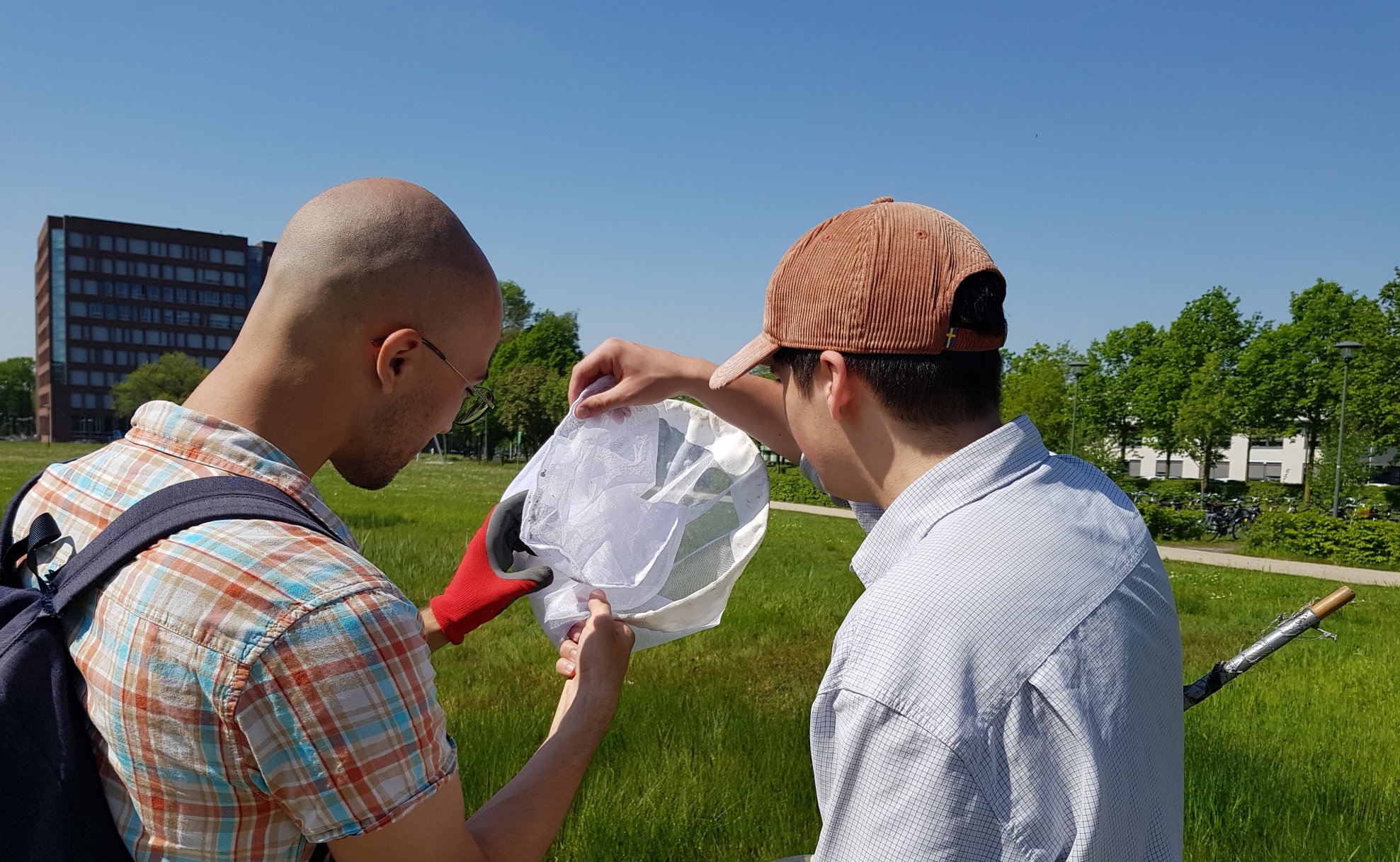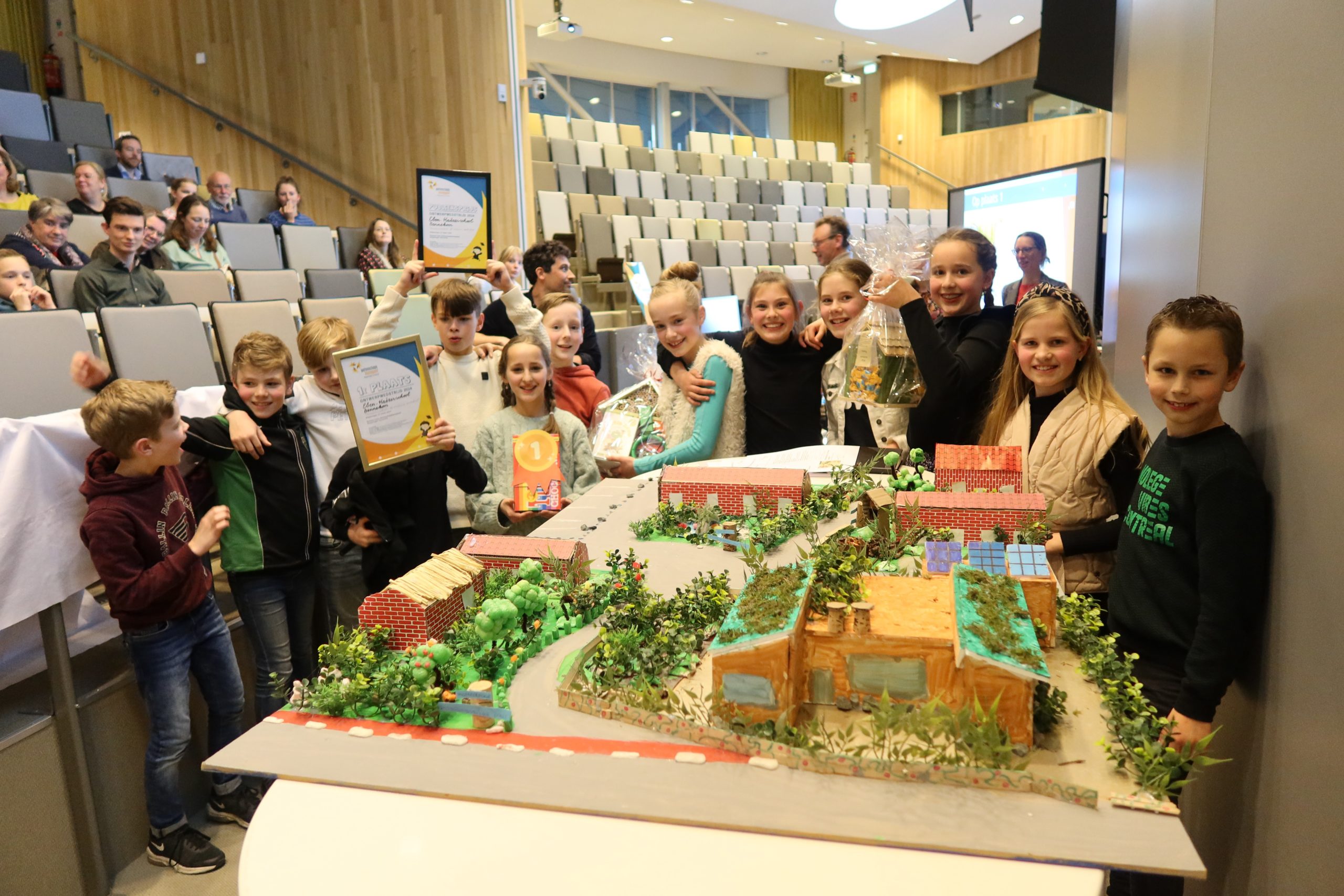It’s a holy grail for nature aficionados: discovering a new species. Student Bram van den Bergh got lucky for the second consecutive year. During his search for the campus Bioblitz, he discovered an aphid species that has not yet been recorded in the Netherlands. The species is Brachycaudus lateralis, which lives on ragwort and thistles.
Two weeks ago, on Friday, the bachelor student in Forest and Nature Management was walking in Lumen’s nature garden with Roben Koiter. They were looking for orchids, which they both like. ‘We saw ragwort just outside of the garden along the path, with the lower part of the stem completely covered with soil’, Van den Burgh says. It sparked his curiosity, especially when he saw ants crawling around.
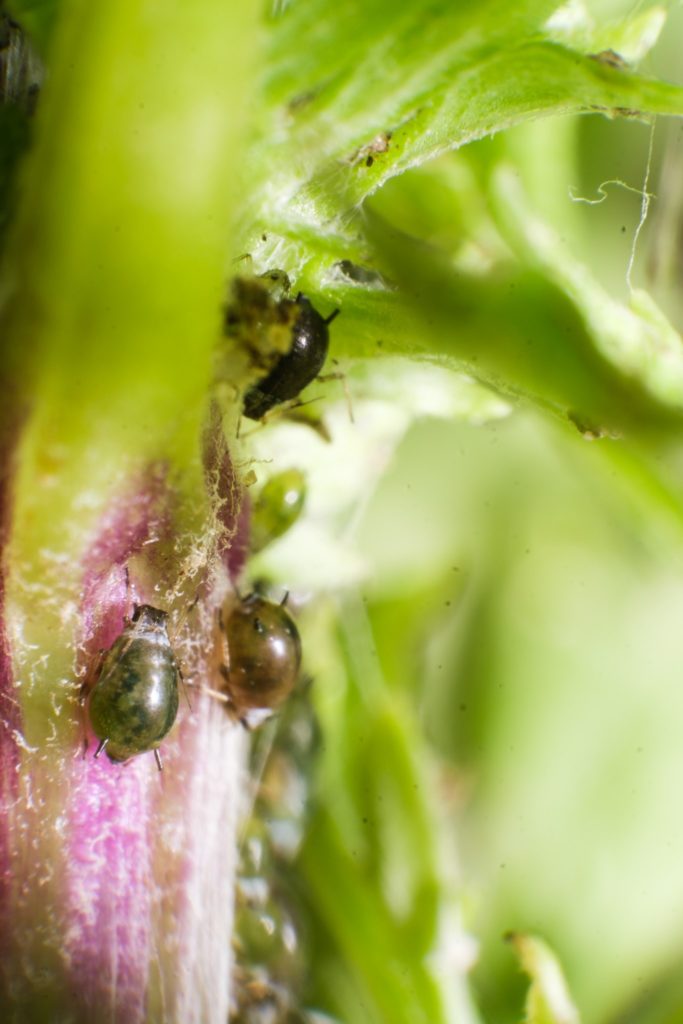
Symbiosis
‘I know that some ants support aphid colonies in the soil. Van den Bergh explains they receive honeydew in exchange for protection, a great symbiosis’. ‘I removed some soil, and a fair number of aphids appeared. I took some photographs so that I could identify them later.’ That was not very difficult.
With the help of some sides on the internet, the aphids were identified as Brachycaudus lateralis. ‘However, when I wanted to enter my findings on Waarneming.nl, I was unable to because this species was not listed. I thought: hey! This species is new to the Netherlands. Fantastic, of course.’ A closer investigation of one of the captured aphids under a microscope confirmed its identity.
Climate change
During last year’s Bioblitz, Van den Bergh also discovered a new aphid species, the Aphis loti, which lives mainly on bird’s foot trefoil. Van den Bergh says getting lucky a second time is not as unusual as it may seem. ‘Not many people search for aphids, and climate change causes species to migrate from the south to more northern regions.’
Ants appear to have constructed some form of tent around the plant’s stem, where the aphids feel safe
Bram van den Bergh, Forest and Nature Management bachelor
Van den Berg clarifies that the aphid comes in different forms within the colony. ‘Aphids occur in both winged and wingless forms. The wingless aphids are the green youngsters. They turn black with age. The winged aphids are black. There are also light-brown specimens that have been parasitised by wasps who lay eggs in the aphid. The aphid has been consumed from the inside; what remains is the brown exoskeleton.’
Colony
A typical trait in the Brachycaudus lateralis is the fact that they form colonies covered in soil, says Van den Bergh. ‘This is something they would normally do under the ground around the plant’s roots. Here, ants appear to have constructed some form of tent around the plant’s stem, where the aphids feel safe. That explains why they are located on the stem above ground.

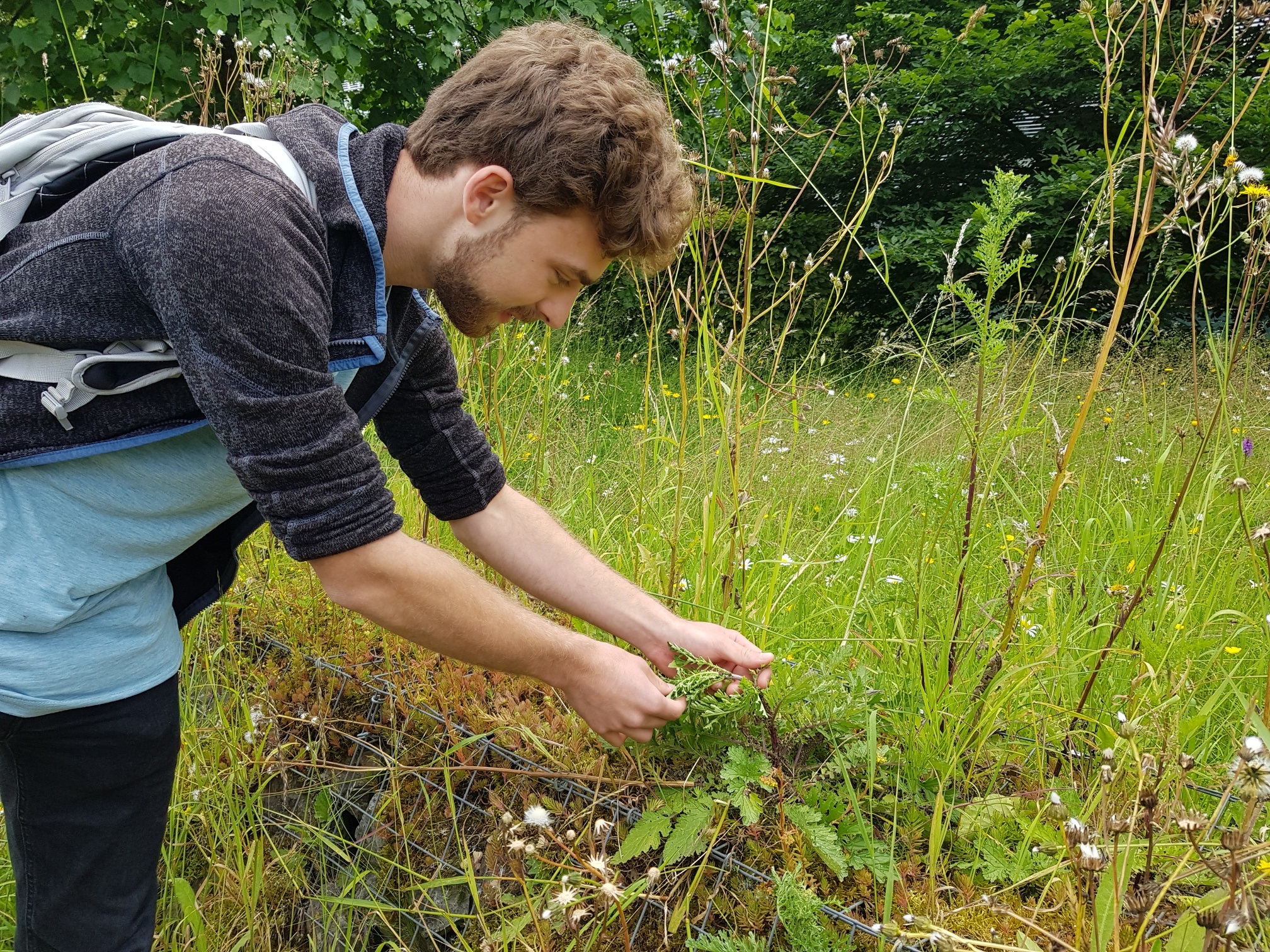 Bram van den Bergh finds a new aphid species on the campus for the second consecutive year. Photo Roelof Kleis
Bram van den Bergh finds a new aphid species on the campus for the second consecutive year. Photo Roelof Kleis 